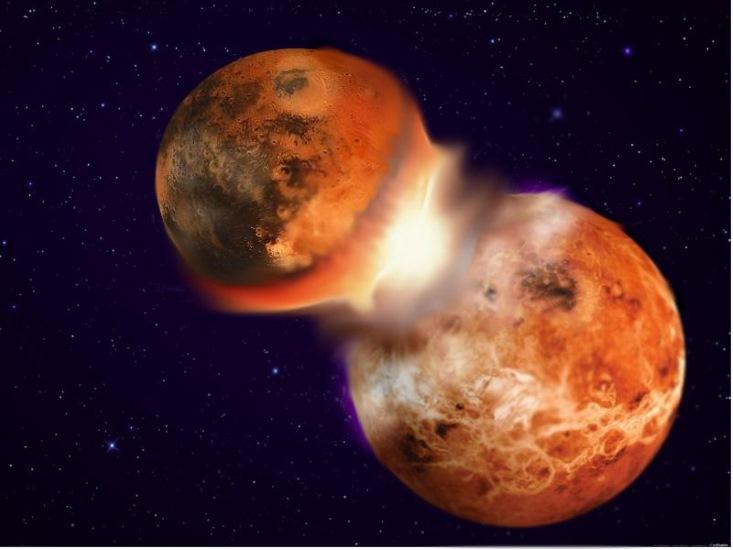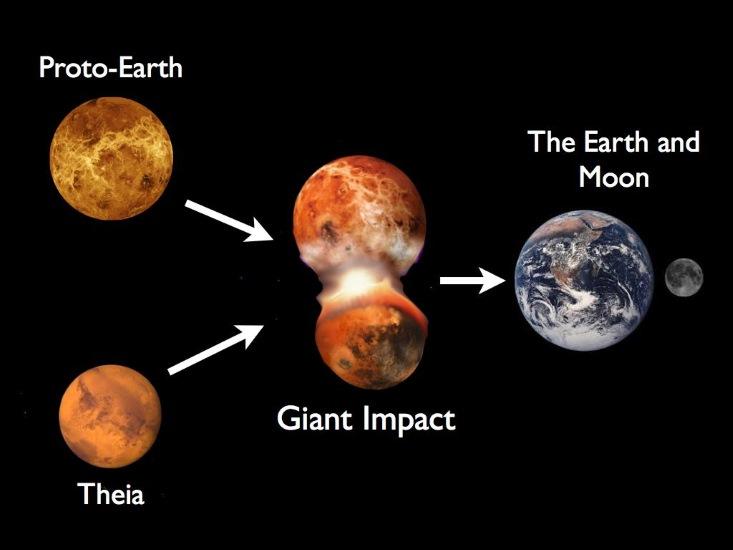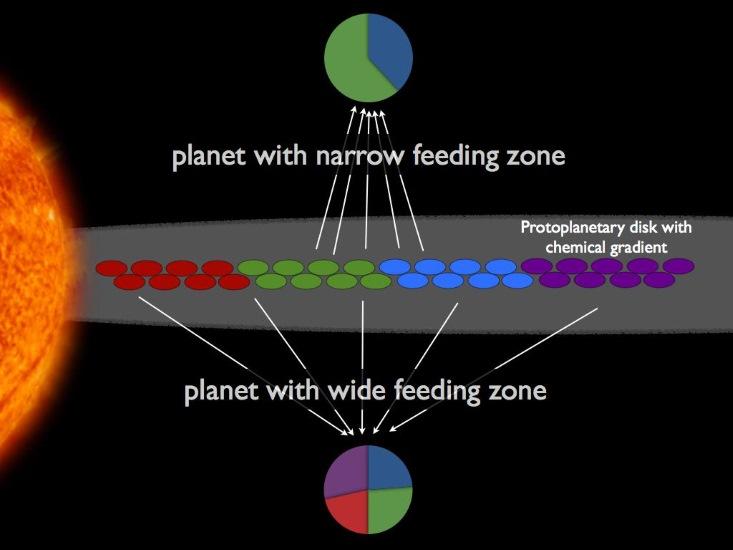Imagine that two very similar-looking neighbors undergo a genetic test. The exam shows that the pair’s genetic fingerprints are virtually identical. They feel a flash of shock and excitement. What does this mean? Could they be long-lost twins, separated in a hospital mixup?
The Earth and Moon share a similar issue, one that poses a major scientific puzzle. At the isotopic level—the “genetic” level for rocks—the Earth and Moon are essentially identical. While they have different relative amounts of rock and iron, the Earth and Moon’s rocks share the same isotopic signatures in several different elements; oxygen is the most studied. This isotopic similarity has stumped scientists for decades. It must mean something about the Moon’s origin, but exactly what?
Over the past century astronomers have come up with several theories for how the Moon formed. Perhaps the Moon was a wandering planet that was gravitationally captured by Earth (the capture theory). Perhaps the nascent Earth was spinning so fast that it barfed out the Moon (the fission theory). Or perhaps the young Earth was hit by another growing planet and this created the Moon (the giant impact theory). In recent years the third of these ideas has taken over as the preferred model.

The giant impact theory echoes what we know about the formation of the entire Solar System, which coalesced from a disk of gas and dust around the young Sun. The Earth and the other planets grew in a series of collisions, starting from dust particles and culminating in massive impacts between planet-sized bodies. The last giant impact involving the growing Earth may have spawned the Moon by creating a disk of rocky debris in orbit around the planet. The giant impact model has become so popular that the two bodies involved in the impact even have names: the proto-Earth (the progenitor of Earth) and Theia (the impacting body, named for the Greek goddess who was the mother of the Moon).
To get a better understanding of these two bodies, we need to look at their genetics. Here, “genetic” information refers to exquisite geochemical measurements of different isotopes of certain elements. Oxygen is particularly useful because it has three stable isotopes: 16O, 17O and 18O. (Isotopes all have the same number of protons in their nuclei but different number of neutrons.) Precise measurements have shown that the Earth and Moon share the same oxygen isotope fingerprint—that is, just about the same relative abundances of the different isotopes. A minuscule difference was measured for the first time in 2014, at the level of 12 parts per billion. The difference in oxygen isotopes between Earth and Mars is about 30 times larger (roughly 300 parts per billion).
In the giant impact theory, the proto-Earth and Theia are generally assumed to have had different oxygen isotope signatures. That’s because each planet’s signature is determined by its orbit; presumably, the only way to get nearly identical signatures is for two planets to form on nearly the same orbit, which does not fit with how we think planets grow. So if Earth and Theia had different fingerprints, why do the Earth and Moon share the same one?

There are a couple of potential solutions to this problem but they require “just-so” conditions, which are, by definition, very unlikely. One possible solution is that the Moon formed from an equal mix of the proto-Earth and Theia. However, computer simulations show that for most impacts, the disk of debris from which the Moon coalesced is dominated by material from Theia, with a 10–40 percent contribution from the proto-Earth. Another possible solution is that the Moon-forming disk chemically equilibrated with the Earth after the impact. This equilibration should indeed occur but current calculations suggest that it takes far longer than the time required to build the Moon.
In the April 9 issue of Nature, Alessandra Mastrobuono-Battisti, Hagai Perets, and I propose a new solution to this longstanding puzzle. The premise is simple: What if Theia and the proto-Earth already shared the same chemical composition? If that were true, then the giant impact scenario could not avoid forming a Moon with the same composition as Earth.
To test this idea, we used a suite of computer simulations of the formation of Earth and the other rocky planets. The simulations followed the orbits of a disk containing thousands of rocky bodies orbiting the young Sun. Small bodies collided and grew over roughly one hundred million years and formed planets akin to the Earth and the other three terrestrial planets.
Each simulation produced an Earth “analog,” a planet about the right size and on about the same orbit as Earth. We traced each simulated planet’s genealogy by inspecting its constituent bodies, its “feeding zone.” A planet with a narrow feeding zone formed solely from material on very close orbits, essentially from a narrow ring. In contrast, a planet with a wide feeding zone grew by collisions with objects that started on very different orbits, a broad disk.

A planet’s chemical fingerprint is simply the sum of the fingerprints of all the bodies from which the planet grew. In other words, a planet’s feeding zone determines its chemical signature. We inspected the growth of each of our simulated Earth analogs. What was especially important was each planet’s last giant impact—a collision like that between proto-Earth and Theia. We calculated the feeding zones for these bodies before and after they collided. That is where things got interesting.
Remarkably, we found that the proto-Earth and Theia analogs often shared similar feeding zones. Before they collided, they had grown from similar distributions of building blocks. This didn’t happen in every simulation, but was a robust phenomenon, occurring about one quarter of the time. This means that the scenario we envisioned was indeed possible—that Theia and the proto-Earth may already have had the same isotopic (genetic) fingerprint before they collided. It makes sense that the Earth and Moon should also share a fingerprint. The neighbors share the same genetics not because they are long-lost twins but because their ancestors were a similar mix of the same ancient populations.
In our simulations, Theia analogs’ feeding zones were almost always much more similar to the proto-Earth’s than to other nearby planets’. This fits the story nicely since Mars has a very different isotopic fingerprint than the Earth and Moon.
The final piece of the puzzle is to use our simulations to compute the planets’ actual isotopic signatures. To make sure that the Earth and Moon should indeed be the same at the parts-per-billion level. This is tricky because we don’t know what the starting conditions were. What was the chemical gradient the Sun’s planet-forming disk? We simply don’t know. Making simple assumptions, we found that a significant fraction of simulations (about 10–25 percent) provide a good match. There is some debate about this step, because a different study by Nathan Kaib and Nick Cowan found a different result: that it’s a stretch for the proto-Earth and Theia to have been similar enough to reproduce the Earth and Moon. The differences between the two groups are subtle but important and we are working to sort them out.
So there you have it. The Earth’s and Moon’s similar isotopic fingerprints may be telling us that the proto-Earth and Theia already had a shared genetic ancestry. Their chemical signatures were the same before the giant impact because they grew from the same source material. We know this thanks to planetary genetics.
Sean Raymond is an astronomer studying the formation and evolution of planetary systems. He also blogs at planetplanet.net.






























